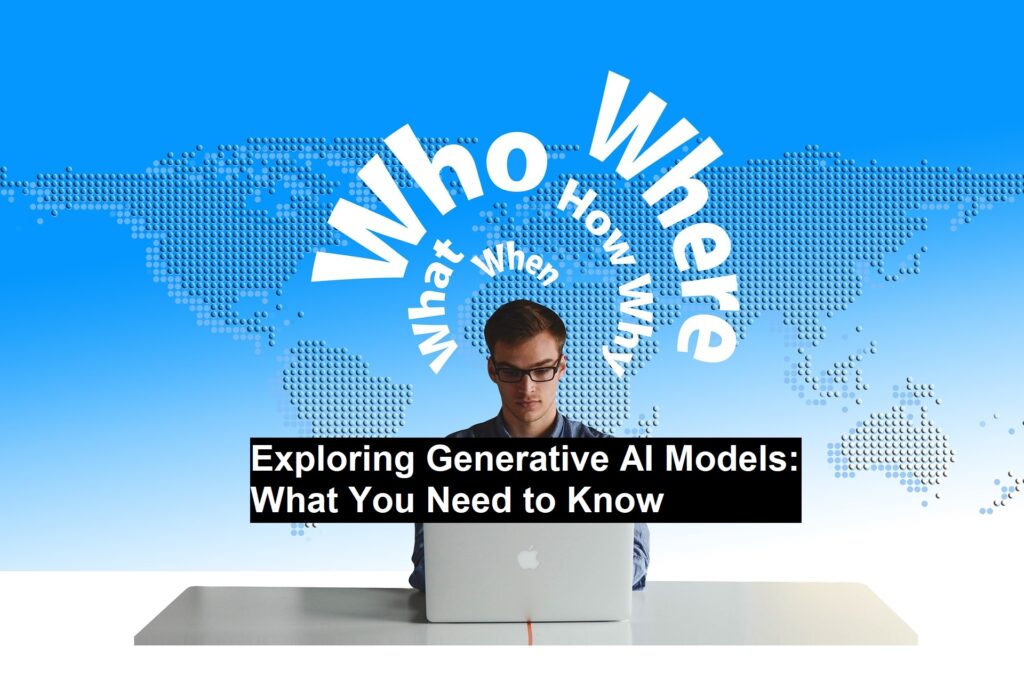Generative AI is rapidly transforming industries across the globe, becoming one of the most exciting developments in artificial intelligence. Whether it’s revolutionizing creative processes, boosting productivity, or powering innovative digital simulations, generative AI models are driving change and redefining what technology can achieve. Understanding the fundamentals of generative AI, its models, and its applications is key to appreciating its potential—and preparing for its expanding influence.
What Are Generative AI Models?
At their core, generative AI models are a type of AI designed to produce new, original data or content based on patterns they’ve learned from existing datasets. Unlike traditional rule-based systems that follow strict preprogrammed instructions, generative AI uses machine learning (ML) and neural networks to recognize complex structures within data and then apply that understanding to generate entirely new material.
Read: AI Coding Assistants in DevOps: A Double-Edged Sword for 2024 | Insights from a DevOps Consultant
Depending on the data used for training, generative AI can produce a wide array of outputs, such as:
- Text: Generating articles, stories, or even entire conversations.
- Code: Writing functional programming scripts, debugging errors, and offering code solutions.
- Images and Videos: Creating realistic images, deepfake videos, and computer-generated visual content.
- Audio and Music: Composing original music tracks, voiceovers, and soundscapes.
This adaptability makes generative AI a groundbreaking tool across industries ranging from content creation to scientific research.
The Evolution of Generative AI Models
While the roots of generative AI trace back to the 1960s, the field made a groundbreaking leap in 2014 with the introduction of Generative Adversarial Networks (GANs). GANs rely on two interconnected neural networks:
- A generator that creates new content (data instances).
- A discriminator that evaluates the content to determine its quality and authenticity.
The generator strives to create realistic outputs that can “fool” the discriminator, while the discriminator improves its ability to distinguish generated content from real data. This ongoing feedback loop helps the model learn and refine its output continuously, resulting in increasingly realistic and accurate material.
Top Applications of Generative AI Models
Generative AI’s capabilities extend across many fields, creating opportunities for innovation and efficiency. Here are a few standout applications:
- Content Creation and Creative Assistance
Generative AI is becoming an invaluable tool in artistic and creative industries. For content creation, it can generate:
- Marketing materials like ad copy, graphics, and social media posts.
- Entertainment assets such as scripts, music, and video content.
- Art and design concepts for mockups, visual artwork, and prototypes.
In creative assistance, generative AI models act as co-creators, helping designers, writers, and artists brainstorm ideas, develop drafts, or accelerate the production process. While these tools supplement human creativity, they are not yet fully autonomous or flawless—but they are evolving fast.
- Simulation and Immersive Experiences
Generative AI is enhancing digital simulation by producing realistic and dynamic virtual environments. Applications include:
- Gaming: Generating lifelike characters, settings, and adaptive storytelling to create immersive experiences.
- Scenario Simulation: Developing predictive models and virtual training exercises for fields like military planning, emergency response, and healthcare.
- Decision-Making Tools: Simulating business strategies or real-world scenarios to optimize planning and resource allocation.
By creating believable, data-driven simulations, generative AI allows industries to explore new solutions and experiences that were previously impossible or cost-prohibitive.
- Data Augmentation and Research
Generative AI is playing a vital role in fields that require vast amounts of high-quality data, such as:
- Medical Imaging: Generating synthetic MRI or CT scan data to train AI diagnostic tools.
- Scientific Research: Simulating experimental data for testing hypotheses or training models without real-world trials.
- Cybersecurity: Creating fake data or scenarios to train systems in detecting anomalies, threats, or fraud.
By augmenting datasets, generative AI enables researchers and developers to test ideas efficiently, overcoming data shortages and ethical constraints.
- Advanced Personalization
Generative AI also powers hyper-personalized experiences, such as:
- Dynamic Marketing: Creating tailored email campaigns, product recommendations, or content for individual consumers.
- Virtual Assistants: Customizing conversations and support based on user preferences and behaviors.
- E-Learning Platforms: Generating adaptive educational content based on a learner’s progress, skill level, and learning style.
This level of personalization enhances user engagement, making generative AI a powerful tool for businesses focused on customer satisfaction.
The Future of Generative AI Models
While generative AI models have already made remarkable strides, their evolution is far from complete. Advancements in deep learning, processing power, and ethical AI practices will continue to push the boundaries of what generative AI can accomplish. Challenges such as addressing bias in training data, ensuring ethical usage, and maintaining transparency remain central to its development.
However, as generative AI becomes more refined and widely adopted, it will reshape how businesses operate, how creatives innovate, and how technology drives progress. The key to leveraging generative AI lies in understanding its capabilities, limitations, and responsible applications.
Generative-AI-ModelsWould you like to dive deeper into the world of generative AI and discover the opportunities it holds for your industry? For further insights and detailed information, check out the accompanying resource provided by Web Age Solutions an organization offering machine learning training courses.



